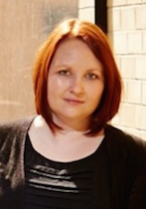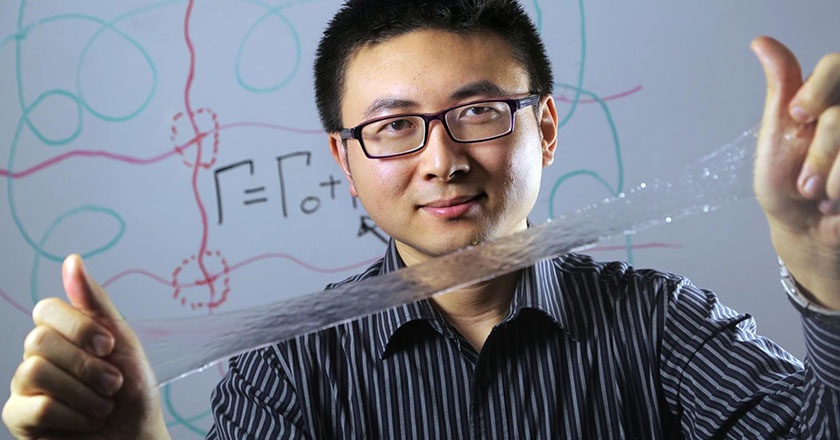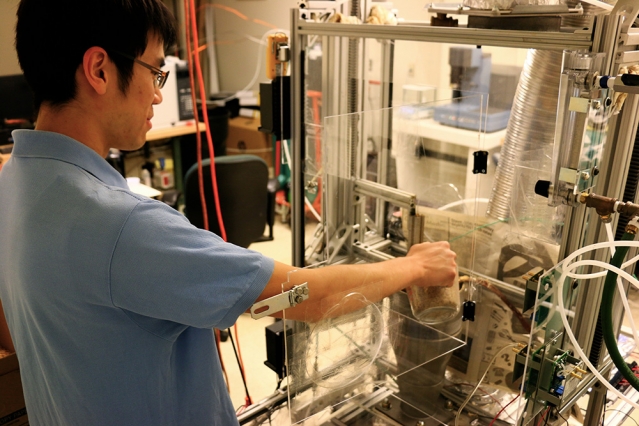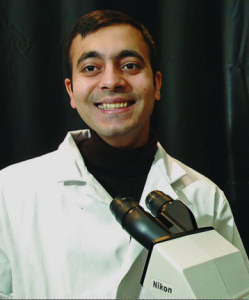J-WAFS achievements – a proud history of progress
Almost five years on from its formation at the Massachusetts Institute of Technology (MIT), the global reach and enormous potential of the research supported by the Abdul Latif Jameel Water and Food Systems Lab (J-WAFS) grants is becoming ever clearer.
Nearly 60 MIT Principal Investigators (PI) from 19 MIT departments, labs, and centers; 58 funded doctoral, masters, and undergraduate students; 35 postdocs, and 15 additional research staff are among those involved in the skilled and diverse research community fuelled by J-WAFS’ funding. At MIT, the J-WAFS seed grant program is the most significant funding source for water and food research. This support provides the MIT research community with essential resources as they strive to tackle some of humankind’s most severe challenges.
Their research, it is hoped, will deliver significant impacts on water and food safety and supply, despite the increasing demands on our water and food systems caused by climate change and consumption. J-WAFS funding also extends beyond early “seed” research grants. Their J-WAFS Solutions Program supports the commercialization of these and other innovative technologies and approaches.
With requests for proposals for the 2019 J-WAFS initial seed grants already distributed, Opening Doors looks back at the success of some of the initial projects first funded in 2016 that have recently reached their conclusions.
Active materials for heavy metal extraction from water
PI: Timothy Swager, John D. MacArthur Professor of Chemistry, Department of Chemistry
 By developing scalable designs for polymer-based membranes that can remove toxins, such as lead and mercury, from water at the molecular level, principal investigator Timothy Swager hopes to develop a technology that could transform the water industry. The membranes work by manipulating electrical charges to catch and release toxic metal ions. So far, Prof. Swager’s team has built and validated a prototype filter that can successfully remove both metals, as well as show how it could be used at an industrial scale. The team has already secured financial support from the MIT Energy Initiative to build on its successful research results. This follow-on grant is supporting the application of the membrane production process toward the creation of high-performance fuel cells. Prof. Swager is also exploring how the same filtration strategy could be used to extract specific molecules from plants.
By developing scalable designs for polymer-based membranes that can remove toxins, such as lead and mercury, from water at the molecular level, principal investigator Timothy Swager hopes to develop a technology that could transform the water industry. The membranes work by manipulating electrical charges to catch and release toxic metal ions. So far, Prof. Swager’s team has built and validated a prototype filter that can successfully remove both metals, as well as show how it could be used at an industrial scale. The team has already secured financial support from the MIT Energy Initiative to build on its successful research results. This follow-on grant is supporting the application of the membrane production process toward the creation of high-performance fuel cells. Prof. Swager is also exploring how the same filtration strategy could be used to extract specific molecules from plants.
Bacterial viruses as pathogen control agents in aquaculture systems
PI: Martin Polz, Professor, Department of Civil and Environmental Engineering
 One of the many challenges faced by aquaculture farms is population decline due to bacterial infection. Oysters and shellfish are particularly vulnerable to infection, and they are often treated with large doses of antibiotics.
One of the many challenges faced by aquaculture farms is population decline due to bacterial infection. Oysters and shellfish are particularly vulnerable to infection, and they are often treated with large doses of antibiotics.
However, this strategy is not always effective at controlling disease. In fact, the use of antibiotics in aquaculture is so widespread that they are becoming less effective over time. Instead, viruses that are able to target specific harmful bacteria could perhaps serve as a sustainable alternative. Prof. Polz and his research team is attempting to create effective ‘virus cocktails’ that can suppress the growth of harmful bacteria. They have already characterized and mapped virus/bacteria interactions to identify combinations of viruses that can stay ahead of bacteria’s ability to evolve resistance, and has received follow-up funding from the Simons Foundation to explore this research into virus-bacteria interaction further.
PIs: Jongyoon Han, Professor, Department of Electrical Engineering and Computer Science and Department of Biological Engineering; Timothy Lu, Associate Professor, Department of Electrical Engineering and Computer Science and Department of Biological Engineering

Detecting foodborne pathogens in food production and processing facilities is a major issue.
Early detection allows companies and facilities to more effectively control outbreaks of foodborne disease, which reduces cost as well as the adverse health impacts that occur when contaminated food reaches the marketplace. Using their expertise in microfluidics, Prof. Han and Prof. Lu built a high-throughput device that separates and concentrates cells in food samples.
This is combined with a virus detection system that uses viruses engineered to specifically infect bacteria such as Salmonella and Listeria, and cause them to light up – quickly revealing the level of contamination present. Prof. Han’s group is now assessing whether the technology could be used for water safety testing.
Estimating the benefits to strengthening water markets
PI: Christopher Knittel, George P. Schultz Professor, Sloan School of Management
 As water scarcity becomes an increasingly pressing challenge, how can economic policy promote more efficient water use in urban and agricultural contexts?
As water scarcity becomes an increasingly pressing challenge, how can economic policy promote more efficient water use in urban and agricultural contexts?
By compiling the first known complete data set capturing surface water allocations in California from 1980 to the present, Prof. Knittel’s team is painting a more accurate picture of water use in order to understand and quantify the economic and environmental benefits of water markets e.g. selling, purchasing, and trading water resources.
Prof. Knittel has now established successful relationships with the U.S. Department of Water Resources, the State Water Resources Control Board, and several brokerage and consulting firms that are involved in water pricing – each of which is invested in future research results.
Air pollution impacts on global crop yields
PI: Colette Heald, Associate Professor, Department of Civil and Environmental Engineering
 How does air pollution affect crop production? While much research has been done on the effect of ozone on crop health and yield, little research exists on the effect of particulate matter.
How does air pollution affect crop production? While much research has been done on the effect of ozone on crop health and yield, little research exists on the effect of particulate matter.
Professor Colette Heald of the Department of Civil and Environmental Engineering noticed this research gap. She used a 2016 J-WAFS seed grant to examine the effects airborne particulate matter on crop yield. Combining crop production and atmospheric chemical transport models, her team created the first comprehensive estimate of the food production impacts of air pollution. The models demonstrated that, while ozone damages plants’ leaves, particulate matter can diffuse solar radiation and thereby increase the sunlight available to plants, offsetting some projected ozone damage. However, the research results also revealed a great degree of variability, demonstrating the uncertainty of the overall impact of particulate matter on global crop yields.
J-WAFS: A catalyst for solutions-oriented research
In 2017, seven more research projects received a total of US$ 1.4m in J-WAFS seed grant funding.

Among them is an attempt by Prof. Xuanhe Zhao and Prof. John Lienhard to develop a chemical-free, vibration-based membrane cleaning technology that could dramatically improve the efficiency – and reduce the costs – of reverse osmosis, the most widely used desalination process in the world. “Fresh water is fundamental to our existence,” says Prof. Zhao, “but ensuring a stable, sustainable supply is a huge challenge – particularly in water-scarce areas like the Middle East and North Africa.” The pair hope their research can reduce the maintenance and operating costs associated with reverse osmosis, which in turn should also lower the cost of water to consumers.
Through three Rasikbhai L. Meswani Fellowship for Water Solutions awards and two additional J-WAFS Graduate Student Fellowship Program awards, since 2017, five MIT doctoral students have received research support for projects that could have a significant impact on future water supply management.
They are:
- Providing a system of analysis for the design of engineering infrastructure that can minimize the supply planning uncertainties – including rainfall, population and climate change – across Saudi Arabia, Kenya and Australia (Sarah Fletcher, 2017 fellow).
- Building the necessary knowledge to support nanotechnology development that could ultimately deliver more efficient, sustainable and cost-effective desalination (Omar Labban, 2017 fellow).
- Developing genetically engineered microbes that could cheaply and effectively be used as water quality sensors (Tzu-Chieh Tang, 2017 fellow).
- Designing an affordable, easy-to-use water filter made of xylem tissue in wood that can remove contaminants from marginal water supplies in rural areas and vulnerable communities (Krithika Ramchander, 2018 fellow)
- Examining how transnational water operators’ partnerships (WOPs) could provide an alternative approach for strengthening public water and sanitation utilities in developing countries (Andrea Karin Beck, 2018 fellow)
Research in progress
The crop of J-WAFS funded research in 2018 includes a project led by Prof. Ahmed Ghoniem and doctoral student Kevin Kung.

The pair are working on a project to refine new biomass processing technology to produce fertilizer on a small scale in rural communities, using mostly local resources, labor, and agricultural waste. “The funding from J-WAFS is enabling us to take the essential first steps to start making inroads into this market and hopefully turn our vision into a reality,” said Prof. Ghoniem. “We’re confident, too, that working with J-WAFS can help us not only in terms of the technology development, but also in exploring diversification and the commercialization of the technology.”
 Another project involves Prof. Rohit Karnik and Senior Lecturer Amy Smith, who are leading a group of researchers hoping to harness the natural qualities of xylem wood to provide safe, affordable drinking water to low-income groups. “We aim to make use of a natural water-filtration technology that is quite different from those already on the market, with the hope of improving the supply of safe water to rural and low-income communities,” says Prof. Karnik.
Another project involves Prof. Rohit Karnik and Senior Lecturer Amy Smith, who are leading a group of researchers hoping to harness the natural qualities of xylem wood to provide safe, affordable drinking water to low-income groups. “We aim to make use of a natural water-filtration technology that is quite different from those already on the market, with the hope of improving the supply of safe water to rural and low-income communities,” says Prof. Karnik.
This catalogue of J-WAFS projects shows how research support for early-stage ideas can result in advances that both lay important groundwork for future research and lead to technologies that can be scaled up to help address some of the world’s biggest challenges.
Additional details about these and other J-WAFS-funded projects are available on the J-WAFS website.






 1x
1x

 Added to press kit
Added to press kit


